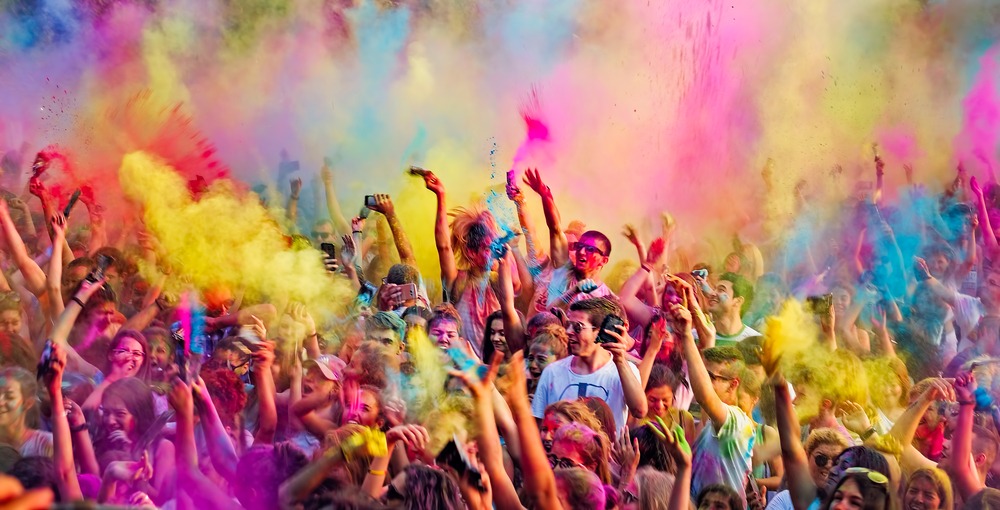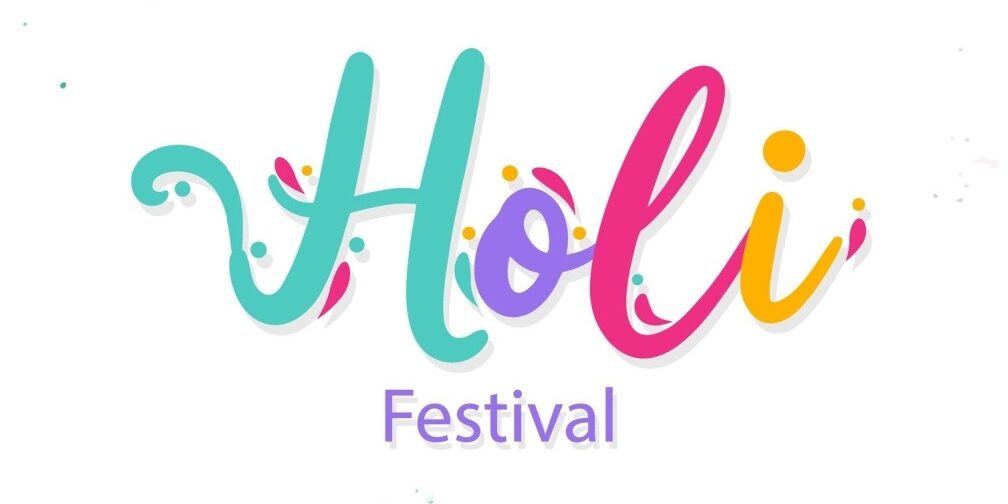Celebrating Holi: The Vibrant Festival of Colors and Its Traditions Across the Globe
Holi, also known as the “Festival of Colors,” is one of the most vibrant and joyous Hindu festivals, celebrated with great enthusiasm in India and across the world. It marks the arrival of spring, a season symbolizing renewal, love, and new beginnings, and is known for the unforgettable experience of throwing colorful powders, dancing, and feasting. Rooted in ancient Hindu mythology and rich cultural traditions, Holi is more than just a celebration of colors; it’s an expression of joy, unity, and hope. This blog explores the diverse ways Holi is celebrated across India and the world.
Origins and Mythological Significance of Holi
The origins of Holi trace back to Hindu mythology, primarily centered around the legend of Holika and Prahlad. According to the story, Prahlad, a devout follower of Lord Vishnu, was persecuted by his demon king father, Hiranyakashipu, for his unyielding devotion. Hiranyakashipu’s sister, Holika, who was immune to fire, attempted to kill Prahlad by sitting with him in a bonfire. However, due to his unwavering faith, Prahlad was saved, and Holika was consumed by the flames. This event symbolizes the victory of good over evil and is honored by lighting bonfires on the eve of Holi, known as Holika Dahan.
Another significant legend revolves around Lord Krishna and Radha. Krishna, mischievously colored Radha’s face as a playful gesture, leading to the tradition of smearing loved ones with colors. This tale contributes to the romantic undertones of Holi, celebrating love, joy, and companionship.

Traditional Holi Celebrations in India
1. Lathmar Holi in Barsana and Nandgaon, Uttar Pradesh
- Holi in Barsana and Nandgaon is celebrated with a unique twist known as Lathmar Holi. Here, women playfully “beat” men with sticks, reenacting a mythological story of Radha and Krishna. Men visit the village of Barsana, where they’re welcomed by women with sticks (lathis) and shields. The event is filled with music, dance, and laughter, symbolizing a playful rivalry between men and women.
2. Phoolon ki Holi in Vrindavan
- In Vrindavan, the birthplace of Lord Krishna, Holi is celebrated with flowers instead of colors, creating an enchanting and aromatic experience known as Phoolon ki Holi. Temples are adorned with fresh flowers, and worshippers are showered with petals as they sing and dance in devotion to Krishna. This floral variation emphasizes the purity and divinity associated with the festival.
3. Royal Holi in Jaipur and Udaipur, Rajasthan
- Rajasthan’s cities, like Jaipur and Udaipur, host Royal Holi celebrations featuring cultural events, elephant parades, and traditional music performances. The royal families often organize gatherings where traditional Rajasthani folk dances are performed, and palaces are decorated in honor of the festival. Udaipur’s Mewar royal family celebrates with grand processions, making it one of the most luxurious and regal Holi experiences in India.
4. Basant Utsav and Dol Jatra in West Bengal
- In West Bengal, Holi is celebrated as Basant Utsav and Dol Jatra with a unique cultural flair. Inspired by the works of Rabindranath Tagore, people dress in yellow attire, symbolizing the blooming mustard fields of spring. Students perform traditional dances and sing Tagore’s songs, creating an atmosphere filled with grace and artistic expression. During Dol Jatra, images of Krishna and Radha are paraded, and people throw colors as an offering.
5. Hola Mohalla in Punjab
- In Punjab, the Sikh community celebrates Hola Mohalla, a three-day festival coinciding with Holi, but with a martial twist. Initiated by Guru Gobind Singh, this celebration includes displays of bravery through mock battles, martial arts, horse riding, and other physical feats. It reflects the warrior spirit of Punjab and combines cultural pride with the festivity of Holi.
The Modern Celebrations Around the World
While the festival is deeply rooted in Indian culture, it has gained global popularity as a joyous celebration of color, unity, and love. Here are some unique ways it is celebrated worldwide:
1. The United States
- Holi festivals in the United States are celebrated with cultural programs, dance, and color throwing events in major cities such as New York, Los Angeles, and San Francisco. Organized by Indian communities and cultural organizations, these events often feature Bollywood music, Indian food, and yoga sessions. Many non-Indians participate, embracing Holi’s message of unity and inclusivity. Notably, the Festival of Colors event, inspired by Holi, has become an annual celebration that draws thousands of attendees, particularly popular among younger generations.
2. United Kingdom
- In the UK, especially in London and Leicester, Holi celebrations are organized by temples and Indian organizations, attracting large crowds. The Leicester Holi Festival, known for its grandeur, offers traditional Indian music, dance performances, and of course, color play. Holi has been embraced by both Indians and Britons, creating a cultural bridge between communities and fostering a sense of unity and understanding.
3. Australia
- Australia’s multicultural cities, such as Melbourne and Sydney, host large Holi festivals attended by Indians and locals alike. These celebrations include color throwing, Bollywood dance shows, and food stalls offering Indian delicacies. Holi in Australia often has a carnival-like atmosphere, complete with DJs, live bands, and food stalls, blending Indian and Western elements.
4. Nepal
- In Nepal, Holi is celebrated as Fagu Purnima and holds special importance in the Terai region. Nepalese people celebrate with water and colors in a joyful atmosphere. Holi in Nepal is similar to its Indian counterpart, with large gatherings, street festivals, and temple visits. Traditional Nepali music and cultural performances are an integral part of the celebration.
5. South Africa
- With a significant Indian population, South Africa celebrates Holi, especially in cities like Durban. The festival brings together South Africans of diverse backgrounds who participate in color throwing, dancing, and singing. Holi events are often held in community centers, and the festival serves as a bridge to share Indian culture with local communities.
6. Mauritius
- Mauritius, with its large Hindu community, celebrates Holi with rituals similar to India. The festival begins with Holika Dahan, followed by a day of color throwing and festivities. Holi in Mauritius has become a national event, with people from all communities joining in the fun, dancing to local sega music alongside Bollywood tunes. All showcasing a unique blend of Indian and Mauritian culture.
The Festival’s Cultural Significance in Today’s World
The Festival has transcended boundaries to become a global symbol of togetherness and cultural celebration. Its popularity worldwide speaks to its universal message: unity, love, and the renewal of life. In countries around the world, Holi celebrations often serve as platforms for people from various backgrounds to learn about Indian culture, fostering intercultural connections. Additionally, it has gained popularity as an environmentally friendly festival with many communities opting for organic colors to reduce harm to the environment.
Holi’s message of harmony resonates with people of all cultures, religions, and backgrounds. It celebrates life’s vibrant colors and encourages everyone to leave behind their worries and embrace the joy of being present in the moment. This universal appeal makes Holi not just a festival, but an experience shared across cultures, embodying the values of tolerance, friendship, and peace.

Celebrating Holi Responsibly
While the festival is joyous, celebrating the festival responsibly is essential. Many communities promote the use of organic colors and discourage the wastage of water, keeping environmental considerations in mind. With the rise of eco-friendly initiatives, Holi is becoming a celebration not only of love and color but also of sustainability.
In conclusion, Holi is more than just a festival—it’s an expression of life, love, and color that transcends geographical boundaries. Whether celebrated in the streets of Vrindavan, the palaces of Rajasthan, or the parks of New York, Holi brings people together, reminding us that the spirit of unity, joy, and compassion is universal. As this colorful celebration continues to spread across the world, it connects diverse cultures and reminds us that love, hope, and joy are the colors that make life beautiful.



































1 Comment